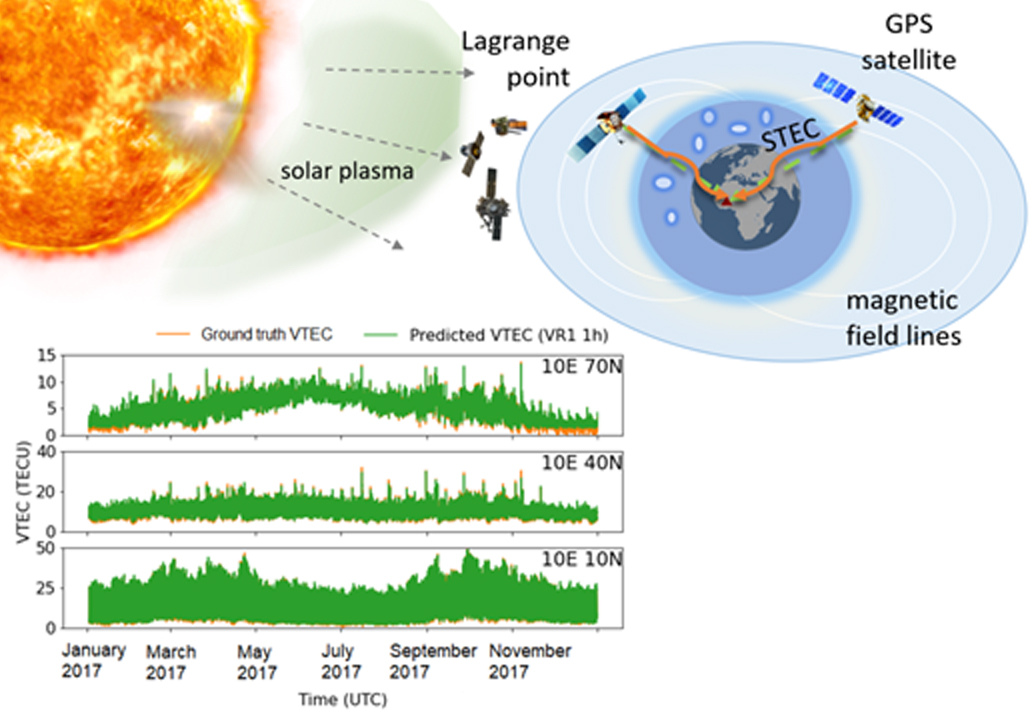Machine learning techniques for Vertical Total Electron Content forecasting

Space weather is considered the greatest risk to global navigation satellite systems (GNSS). High-precision GNSS applications, such as positioning and navigation, require advanced forecast methods for the effects of space weather and the ionosphere on GNSS. Impacts are difficult to model adequately using conventional mathematical approaches since the relationships are often non-linear.
DGFI-TUM and ETH Zurich jointly developed a novel forecast model for ionospheric vertical total electron content (VTEC) using decision tree-based machine learning techniques of Random Forest, Adaptive Boosting (AdaBoost), and eXtreme Gradient Boosting (XGBoost). A novelty of the approach is that an ensemble meta-estimator, i.e., a Voting Regressor (VR) model, combines predictions of several powerful machine learning techniques to create a final VTEC forecast with higher accuracy and better adaptation to data outside the training set. The VR model forecasts VTEC for 1 hour and 24 hours for both calm and stormy conditions. In addition, the relative importance of individual input features to VTEC forecasting was estimated to provide information on which input data the model is particularly good at learning from. In this way, the influence of a predictor on the target variable can be quantified and physical understanding improved. Details of the study are given in the article Ensemble Machine Learning of Random Forest, AdaBoost and XGBoost for Vertical Total Electron Content Forecasting (Remote Sensing, 2022, DOI: 10.3390/rs14153547, [PDF]).
Arcisstraße 21
80333 München